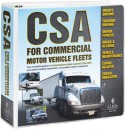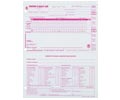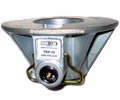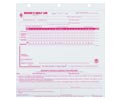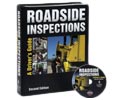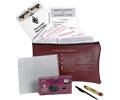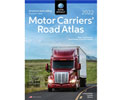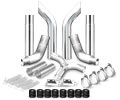Facts About Compliance Reviews
Many rumors surround the Federal Motor Carrier Safety Administration (FMCSA) compliance reviews. "They had nothing better to do so they audited me," "Only the big companies get audited," "They shut down almost everyone they audit" and "No one ever passes," are examples of these rumors. Here are some facts about compliance reviews conducted in 2005.
The selection process
Here are the most common reasons for compliance reviews being conducted, and their percentage of all 2005 reviews performed:
- SafeStat score — 51.7 percent
- "Other" unspecified reasons— 13.7 percent
- Complaint — 11.5 percent
- Conditional carrier (to improve rating or verify improvement) — 10.9 Percent
All other reasons were below ten percent. They included (in order) unsatisfactory follow-up, carrier request, follow-up, and a "combination of reasons" (complaint and follow-up would be an example of a "combination review").
As you can see, the most common reason for being selected for a compliance review was SafeStat score. Of the 8,094 compliance reviews conducted by the FMCSA or their authorized representatives, 4,185, or 51.7 percent were done as the result of SafeStat scores.
SafeStat is the data collection system used by the FMCSA to track all carriers' performance in four safety evaluation areas (SEAs). The four areas tracked are accidents, drivers (out-of-service violation percentage and moving violations), vehicles (out-of-service violation percentage), and safety management. Whether the carrier has one truck or 20,000, they are tracked in SafeStat. If any carrier's safety performance numbers reach a specific threshold, the carrier is placed on the "compliance review list," again, whether the carrier has one truck or 20,000.
Size of carriers audited
The majority of compliance reviews are conducted at small to medium sized carriers. Here is a breakdown of all compliance reviews performed in 2005 based on carrier size and the percentage of the total compliance reviews from 2005:
- One or two units — 9.3 percent
- 3 to 19 units — 45.8 percent
- 20 to 99 units — 31.1 percent
- 100 or more units — 13.8 percent
The results of the compliance reviews
Compliance reviews can result in three types of violations being written. The types are:
- Acute violation. These are violations severe enough that the presence of a single violation requires immediate corrective action by the auditor and the carrier. Acute violation can have the most affect on a carrier's rating.
- Critical violations. These violations are proof of a pattern of poor safety management controls. Critical violations will not an affect compliance review rating until they reach a level of ten percent non-compliance.
- Other violations are violations that are found that are not acute or critical. They will have no affect on the compliance review rating. However, you can be fined for all violations found during the compliance review.
Here are the 12 most common acute violations discovered in compliance reviews in 2005:
- Failing to implement an alcohol and/or drug testing program.
- Failing to randomly test for drugs and/or alcohol.
- Offering or transporting hazardous materials without a security plan.
- Inadequate or no financial responsibility.
- Using a driver who has tested positive for a drug.
- Requiring, permitting or making false statements or records.
- Allowing driver to drive with suspended or revoked CDL.
- Using a physically unqualified driver.
- Driving (or allowing a driver to drive) a commercial motor vehicle while disqualified.
- Operating an out-of-service vehicle.
- Using a driver who refused to take drug or alcohol test.
- Inadequate or no financial responsibility, bus operation.
Here are the most common critical violations discovered in compliance reviews in 2005:
- Driver vehicle inspection report procedures not followed.
- Using a driver before receiving a pre-employment drug test result.
- No driver's record of duty status.
- Failing to preserve supporting documents for 6 months.
- False report of driver's record of duty status.
- Failing to do random drug tests at applicable annual rate.
- Using a commercial motor vehicle not periodically (annually) inspected.
- Inquiries into employment history not kept in driver qualification file.
- Failing to keep minimum records of inspection and maintenance.
- Failing to maintain driver qualification file for each driver.
- Failing to submit record of duty status within 13 days.
- Requiring or permitting a driver to drive after 70 hours on duty in 8 days.
Overall, in 96.7 percent of the compliance reviews, some type of violation was noted by the auditor.
- "Other" (non-acute and non-critical) violations were noted on 46.4 percent of the reviews.
- Critical violations were noted on 43.8 percent of the reviews.
- Acute violations were noted on 19.7 percent of the reviews.
As far as the overall outcome of the reviews, the FMSCA uses a "rating" system consisting of:
- Satisfactory. The rating means the review shows the carrier has adequate safety management controls in place (and functioning) that meet the safety fitness standard prescribed in the regulations. No further action is required by the carrier, other than self correcting any violations found during the review. This was the most common rating awarded following the compliance reviews in 2005. Of all compliance reviews conducted in 2005, 64.6 percent resulted in the carrier being rated as "satisfactory."
- Conditional. The audit determined that the carrier does not have adequate safety management controls in place, and the lack of controls could lead to a failure of the carrier's safety systems. Carriers are allowed to continue to operate when rated as conditional, but are subject to follow-up reviews. The result of 26.2 percent of the compliance reviews in 2005 resulted in the carrier being rated as "conditional."
- Unsatisfactory. The carrier's safety management controls are inadequate, which has led to a failure of the carrier's safety systems. Carriers rated as unsatisfactory must stop operation the 61st day after receiving notice of the proposed unsatisfactory rating (46th day if the carrier transports hazardous materials or passengers). If the carrier submits a corrective action plan to the FMCSA, and the FMCSA determines the motor carrier is making a good-faith effort to improve its safety fitness, the FMCSA may allow the motor carrier to operate for up to 60 additional days. In that time the carrier must take the necessary steps to improve its safety rating. In reviews conducted in 2005, only 531 compliance reviews, or 6.6 percent of the reviews conducted, resulted in the carrier being rated "unsatisfactory."
Penalties
The penalties for non-compliance vary, depending upon the severity and frequency of the offense. Some fines can continue to accrue if left unchecked. For instance, recordkeeping violations can cost a motor carrier $550 for each day the violation continues, up to $5,500. If a motor carrier simply does not keep records, it could cost them $11,000 for each violation. A motor carrier that falsifies or tries to destroy incriminating records could be fined $5,500 if such action is an attempt to misrepresent a recordkeeping violation. Operating a commercial motor vehicle in interstate commerce after receiving a final unsatisfactory safety rating as the result of a FMCSA compliance review can result in a fine of $11,000 levied against a motor carrier. This is for each day they continue to operate in transportation.
New entrant audits
There is an additional safety evaluation program in use by the FMCSA. It is the "New Entrant Safety Audit." It is a review done of any new operation (again, regardless of size). The process is similar, but the new entrant will be determined as either "having adequate safety controls" or "not having adequate safety controls." If the audit discovers that adequate safety controls are not present, the carrier has 60 days from the date of the notification (45 days if transporting hazardous materials or passengers) to take the actions specified in the notice, and to submit proof that it has remedied its safety management practices. If the carrier does not, they must cease operations on the 61st day. If the carrier is making a good faith effort, the FMCSA may extend the 45 or 60 days to give the carrier more time to comply.
Back to » Top | Resource Center | What Owner-Operators Need To Know?



